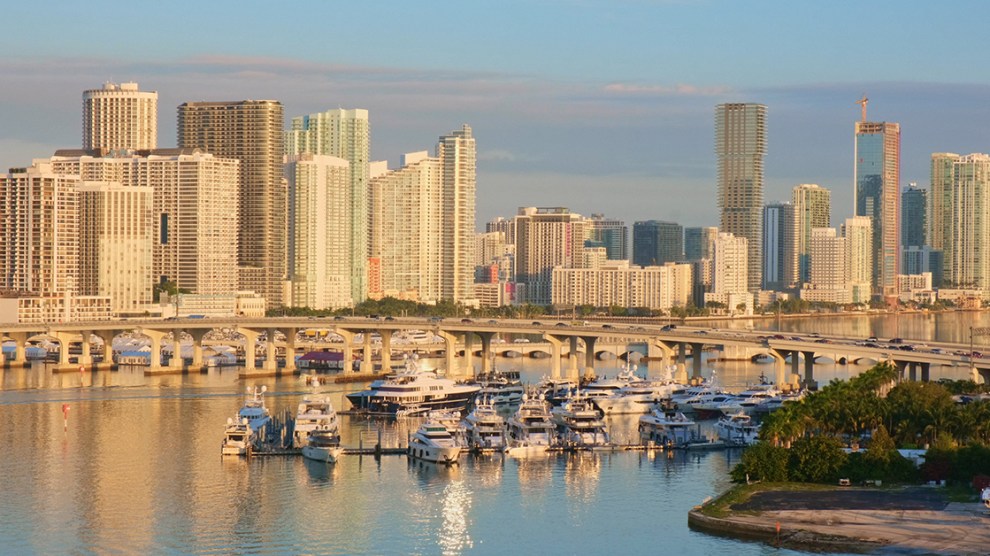Rent Growth Still in the Double Digits, Pricing and Transactions Soften
Increased interest rates affect property values and turn investors cautious, but overall, the multifamily industry continued its strong performance in May.
Report highlights:
- Well into the second quarter, the national average asking rent rose 13.9% on a year-over-year basis, to a new all-time high of $1,680; so far in 2022, rents gained $70.
- Demand remained high, despite the slowing economic growth and rising concerns about gas prices and inflation; the surge in interest rates makes investors cautious and impacts property values.
- Lifestyle rents regain lead over Renter-by-Necessity; occupancy data shows gateway metros continue to rebound, while high-growth metros signal a moderation in demand.
- Strong demand for SFRs sustains the single-family rental sector, with rents up 12.7% year-over-year; occupancy slid 20 basis points.
Rent Growth Well Above All Other Previous Years Except 2021; Occupancy Up in Gateway Markets, Down in High-Growth Metros
Expectedly, the national multifamily market remained on a softening trend compared with the performance exhibited throughout 2021 but remained exceptional. The average asking rent rose 13.9% year-over-year, or $19, in May, to $1,680. The rate is 40 basis points lower than April’s, 3.0% over the past three months and 130 basis points below the peak last summer. Since the start of the year, the national average rent increased by $70.
Florida metros held the lead in year-over-year rent increases: Miami (24.2%), Orlando (23.2%) and Tampa (21.6%). Asking rents increased by at least 10% in 23 of the top 30 markets. Bottom-ranking positions were occupied by Baltimore (9.1%), San Francisco (8.7%) and the Twin Cities (5.2%).
Recovery continues in gateway markets, with occupancy highest in New York (2.1%), San Jose (2.0%) and Chicago (1.5%). Meanwhile, high-growth markets including Las Vegas (-1.1%), Phoenix and Sacramento (each -0.7%), posted declines in occupancy, signaling an easing of demand. Overall, the occupancy rate dropped in seven metros in April.
Unstable Demand Across Property Segments, Lifestyle Rents Regain Lead
On a monthly basis, national asking rents rose 1.1%, 20 basis points above April. Growth was led by Lifestyle rents, up 1.2% in May, 20 basis points above Renter-by-Necessity rents. Lifestyle units led in month-over-month rent growth in 29 of 30 metros.
Gains were led by San Jose (2.2%), the Inland Empire (2.1%) and Seattle (2.0%). Among the low performers were Phoenix and New York (each 0.1%) and Boston (0.3%). Coastal metros led in both Lifestyle and RBN rents: The Inland Empire (2.5% Lifestyle, 1.6% RBN), San Jose (2.2% Lifestyle, 2.1% RBN), Charlotte (1.9% Lifestyle, 1.8% RBN) and Seattle (1.9% Lifestyle and RBN).
Economic Uncertainty Impacts Multifamily; Investor Caution Slows Transaction Activity
Decelerating economic growth, concerns about gas prices and inflation have not dampened multifamily demand but are some of the main headwinds for the industry. The Federal Reserve raised policy rates to limit inflation, with the 10-year Treasury surpassing 3% for the first time since 2018 and priced to yield roughly 2.75% at the end of May, which is 125 basis points above January levels. The trend is anticipated to continue throughout the year. This is especially important to the commercial real estate industry, as it is financed with substantial amount of debt, which makes it highly sensitive to interest rate hikes.
Meanwhile, borrowing costs increased alongside Treasury yields rises; rates are now 125 to 150 basis points higher than most multifamily loans originated before the surge, which carried coupons of 2.75% to 4.25%. Floating-rate debt also more expensive and acquisition yields—averaging 4.5% presently—will surely rise if debt costs remain at higher levels. All these contribute to a softening in transaction activity. Financing is increasingly scarcer, deals with aggressive bids fail. Property values decreased 10-15%, following a 20% appreciation in 2021. However, the change in pricing is hard to accurately describe as many sellers chose to hold the assets rather than sell.
SFR Sector Remains Attractive
The asking rent for the single-family segment rose 12.7% year-over-year through May, 50 basis points below the April rate with Orlando (49.5%), Miami (28.0%) and Toledo (21.5%) in the lead. Nationally, the occupancy rate decreased 20 basis points, marking increases in just 10 of Yardi’s 33 markets.
Demand remains robust in the sector, sustained by competition from institutional investors and increased preference for suburban housing. Moreover, rising rates affect home sales, postponing the homeownership dream for many. Investment and development continue to rise, boosted by the number of investors entering the sector.
Read the full Matrix Multifamily National Report-May 2022











Add Comment